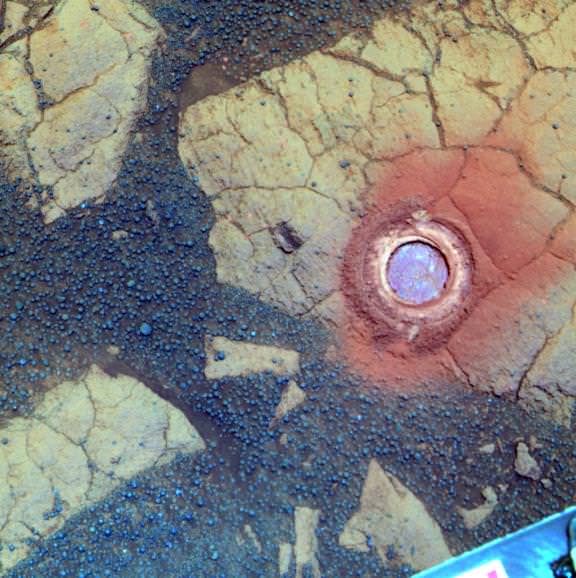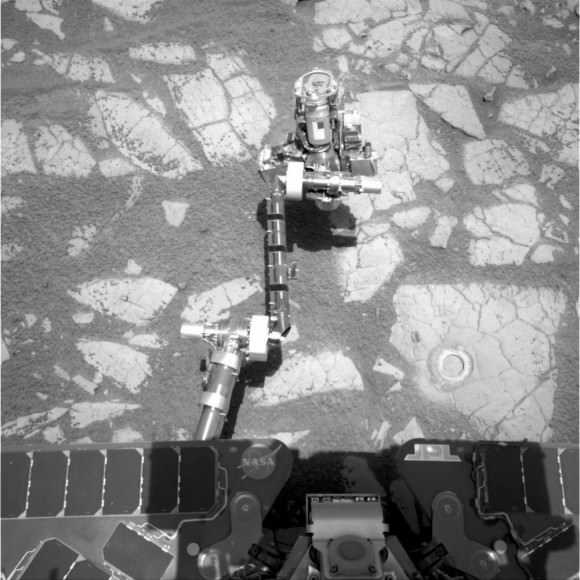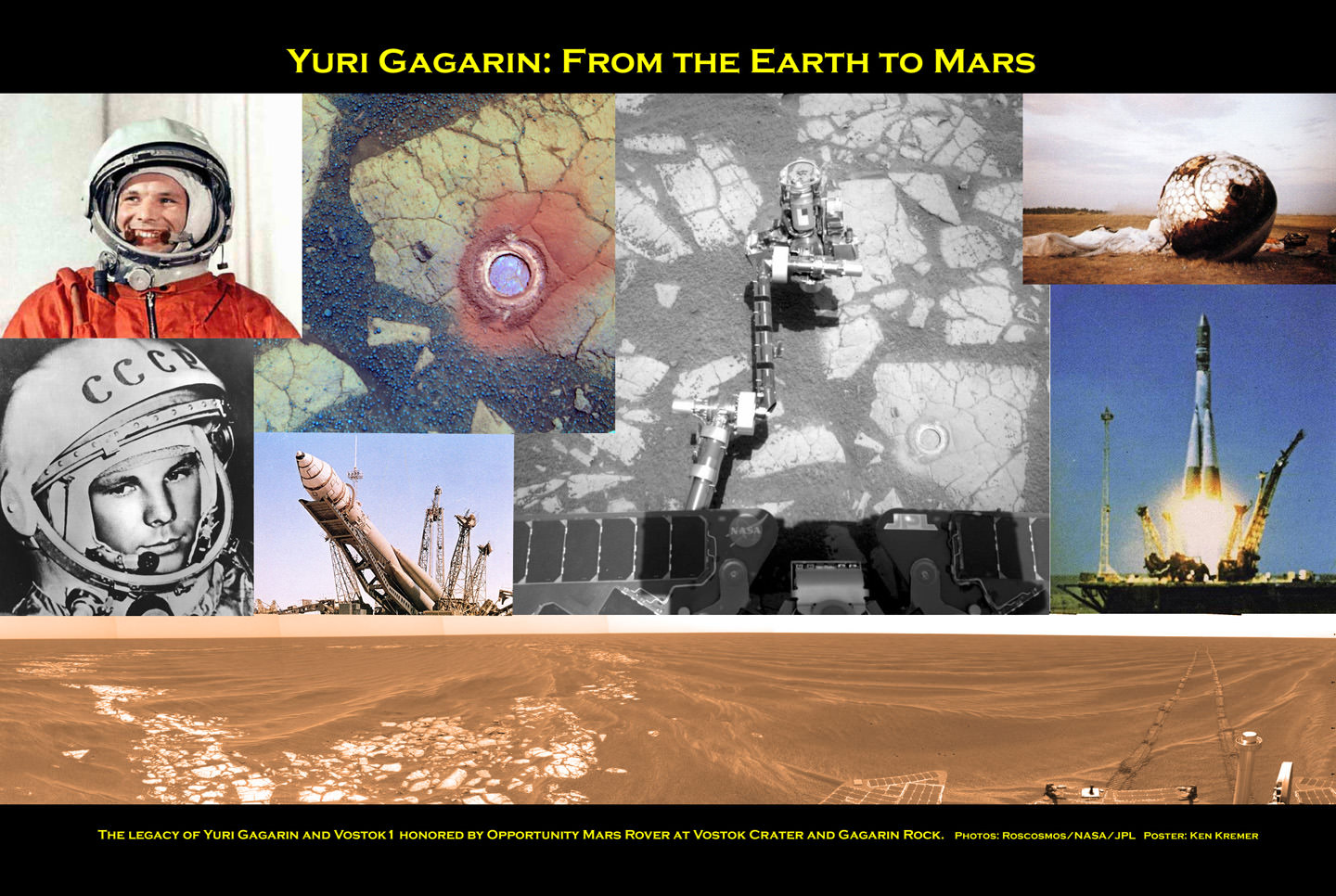[/caption]
50 Years ago, the dream of human spaceflight opened with the courageous blastoff of Cosmonaut Yuri Gagarin inside the Vostok 1 spacecraft on April 12, 1961. Gagarin was the first person to orbit the Earth. Less than a month later on May 5. 1961, Astronaut Alan Shepard bravely set forth on America’s first human spaceflight – Freedom 7.
Barely three weeks afterward on May 25, 1961, these momentous events of the early Space Age led directly to Project Apollo and the historic announcement by President Kennedy that the United States “would land a man on the moon” by the end of the 1960’s.
In honor of Yuri Gagarin, NASA’s Opportunity Mars Rover explored a small and highly eroded crater dubbed “Vostok Crater” in 2005 during its journey in the Meridian Planum region on the Martian surface. Along the edge of the crater, researchers commanded Opportunity to use the Rock Abrasion Tool (RAT), to drill into a rock dubbed “Gagarin” on Sols 401 and 402 in March 2005.

I created the poster collage above as a tribute to the first human spaceflight by Yuri Gagarin and his legacy which eventually led to the exploration of Mars by the Spirit and Opportunity rovers
Opportunity landed on Mars on Jan. 24, 2004 for a planned 90 sol mission. By the time that Opportunity arrived at Vostok Crater, she had already lasted more than 4 times longer than expected and found that water existed on ancient Mars.
Opportunity is still alive today on Sol 2571, more than 28 times beyond its design lifetime !

Scientists are using the data gathered from “Gagarin Rock” and other locations explored by Opportunity to help elucidate the history of the past flow of liquid water on the red planet and determine whether the wet environmental conditions could ever have supported martian microbial life – past or present.
“The 50th anniversary of mankind’s first fledgling foray into the cosmos should serve as an important reminder of the spirit of adventure and exploration that has propelled mankind throughout history,” said Mars rover science team member James Rice of NASA Goddard Space Flight Center, Greenbelt, Md, in a statement. “We are a species of explorers; it is encoded into our very DNA.”
“Half a century ago Yuri Gagarin was lofted into a totally unknown, remote and hostile environment and in doing so opened up a new limitless frontier of possibilities for mankind,” Rice added. “A mere 23 days later another brave human, Alan Shepard, climbed aboard a rocket and ventured into the starry abyss. Their courage and vision continue to inspire and lead us into the unknown. Hopefully, one day in the not too distant future it will lead humanity on a voyage to Mars.”
Many people, including myself, were inspired by the Space Race to become scientists and engineers and hope that continues for the next generation of students today.
Read more about Yuri Gagarin and Opportunity in my related stories:
Yuri Gagarin and Vostok 1 Photo Album – 50th Anniversary of Human Spaceflight
Countdown to Yuri’s Night and the 50th Anniversary of Human Spaceflight !
Stirring Video Tributes to Yuri Gagarin
Opportunity Rover Completes Exploration of fascinating Santa Maria Crater


Map shows the long journey of Opportunity spanning the Meridiani Planum region from landing in Jan 2004 to recent stop at Santa Maria crater. Opportunity explored Vostok Crater in March 2005, about 1 year after landing as indicted by marker in yellow. Credit: NASA/JPL/Cornell Marco Di Lorenzo, Kenneth Kremer

